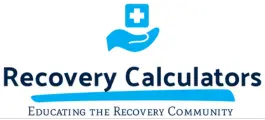In the face of addiction and mental health challenges, rehabilitation communities stand as beacons of hope and recovery. These specialized environments offer more than just treatment; they provide a sanctuary where individuals can reclaim their lives, rediscover their strengths, and rebuild their futures. Unlike traditional medical settings, rehabilitation communities focus on holistic healing, addressing the physical, emotional, and social dimensions of recovery. This comprehensive approach ensures that individuals are not just treated for their symptoms but are empowered to thrive beyond their struggles.
The power of rehabilitation communities lies in their ability to foster a sense of belonging and mutual support. In these communities, individuals find themselves surrounded by others who share similar experiences and understand their struggles. This shared understanding creates a unique bond, encouraging open communication and emotional vulnerability. Group therapy sessions, communal living spaces, and peer support groups become integral parts of the healing process, helping residents to break the isolation that often accompanies addiction and mental health issues. This sense of camaraderie and connection is a crucial element in the journey toward recovery.

Professional guidance is another cornerstone of rehabilitation communities. These facilities are staffed by a diverse team of experts, including psychologists, counselors, medical professionals, and wellness coaches, all working together to provide personalized care. This multidisciplinary approach ensures that every aspect of an individual’s well-being is addressed. For instance, cognitive-behavioral therapy (CBT) might be combined with physical exercise, nutritional counseling, and mindfulness practices to create a well-rounded treatment plan. This comprehensive care model helps individuals develop coping mechanisms, resilience, and the skills needed to maintain long-term recovery.
Education and skill-building are also pivotal components of rehabilitation communities. Many programs incorporate educational workshops and vocational training into their schedules, equipping residents with the tools they need for a successful reintegration into society. These initiatives can range from basic life skills, such as financial management and job interviewing techniques, to more specialized training in fields like technology or the arts. By fostering personal growth and self-sufficiency, these programs help individuals to envision and work towards a future filled with purpose and stability.
Family involvement is often encouraged within rehabilitation communities, recognizing the significant role that loved ones play in the recovery process. Family therapy sessions and educational seminars help to mend strained relationships and build a supportive home environment. By involving families in the healing journey, these communities ensure that individuals receive consistent support even after they leave the facility. This extended network of care is crucial for preventing relapse and sustaining long-term recovery, making the transition back to everyday life smoother and more manageable.
The success stories emerging from rehabilitation communities are testaments to their transformative power. Many individuals who once felt hopeless and lost have gone on to lead fulfilling, productive lives. These stories serve as powerful reminders of the resilience of the human spirit and the profound impact that a supportive, nurturing environment can have. Graduates of these programs often return to give back, mentoring new residents and sharing their experiences to inspire others. This cycle of support and empowerment creates a ripple effect, spreading hope and healing far beyond the walls of the rehabilitation facility.
In conclusion, rehabilitation communities are more than just treatment centers; they are lifelines that offer a second chance at life. By addressing the multifaceted nature of addiction and mental health issues, fostering a supportive community, and providing professional guidance and education, these communities transform lives in profound and lasting ways. They remind us that recovery is possible, and that with the right support, anyone can overcome their challenges and embark on a path of healing and renewal. United for recovery, these communities stand as a testament to the power of compassion, resilience, and the human capacity for transformation.


